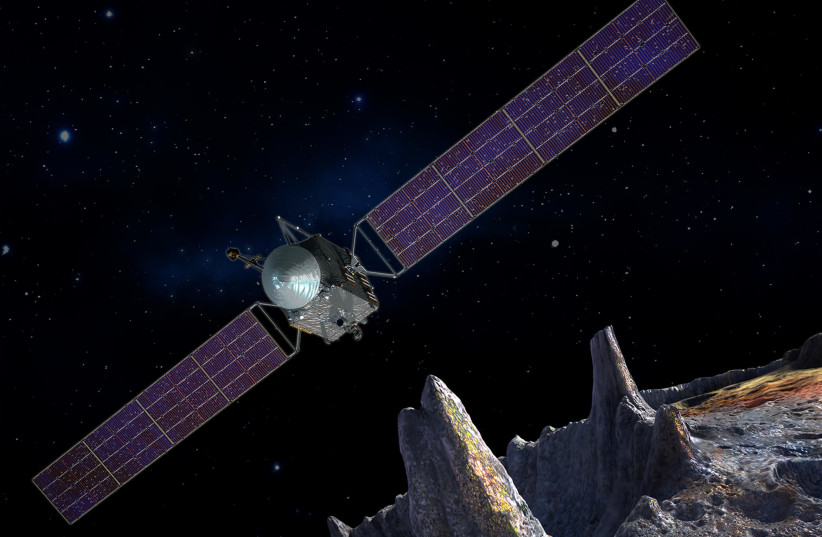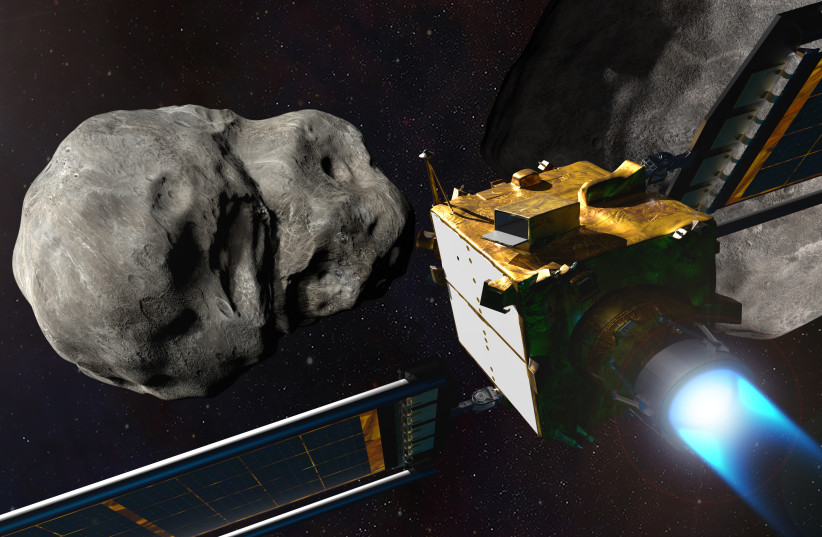They say three's a crowd, and that goes double for asteroids, with three of these cosmic space rocks heading in Earth's direction this coming Valentine's Day, according to NASA's asteroid tracker.
The three asteroids in question have been designated 2022 CF3, 2020 DF and 2022 CF1, though these visitors from the stars are not particularly large and are set to pass by at a fair distance like ships in the night, meaning they pose no danger to romantic celebrations on Monday.
<br>Rocky relationship
Earth's relationship with asteroids has been colorful, with the planet has had a host of asteroid impacts throughout its history. Indeed, some have suggested that they may have even been the source of water on the planet.
Further, many continue to see the potential of asteroids in helping the planet, specifically in asteroid mining. These space rocks can be host to many valuable minerals that can be an environmentally-safer mining option than on Earth.

But fancy jewelry doesn't mean everything is positive.
Indeed, asteroids have also caused severe damage and destruction, having been the cause of thunderous calamities and even extinction-level events.
<br>Size matters
When it comes to asteroids, bigger is always better – if by better, you mean capable of a much more destructive impact.
According to research from the Davidson Institute of Science, the educational arm of Israel's Weizmann Institute of Science, an asteroid over 140 meters wide would release an amount of energy at least a thousand times greater than the energy released by the first atomic bomb if it impacted Earth. Something even larger – over 300 meters wide like the asteroid Apophis – could destroy an entire continent. An asteroid over a kilometer in width could trigger a worldwide cataclysm.
But these three Valentine's Day visitors are nowhere near this large.
The first to arrive, 2022 CF3, is estimated by NASA to be at most, 47 meters wide. For comparison, that's around the size of the Arc de Triomphe, a monument in Paris, the capital of romance.
The others are smaller. Further, none of them will come even close, with the closest being 2022 CF3, which will pass Earth by approximately 2.45 million kilometers. For comparison, the Moon keeps a healthy distance from Earth of around 384,000 kilometers.

What would happen if they did impact?
Well, for starters, it wouldn't be anything like an explosive cataclysm, but it would be quite a bang – literally.
The last known asteroid impact on Earth was in 2013 when a smaller asteroid, around 17-30 meters wide, exploded in the air above Chelyabinsk in Russia. The explosion itself was loud and it caused several injuries due to shattering windows.
Could these asteroids cause similar results? Possibly. However, the rocks themselves would likely not hit the Earth's surface properly, exploding as they meet Earth's atmosphere in a passionate and fiery embrace.
But still, an impact on Valentine's Day could still see many an evening soured, depending on where they would have hit.

Plenty of fish in the sea
There are many asteroids in space, most of which form a barrier between Mars and Jupiter, but many edge close to Earth. These are known as Near-Earth Objects (NEOs).
Right now, there are thought to be at least 1,113,500 known asteroids in our solar system.
<br>Use protection
Suffice to say, experts in Earth-asteroid relationships – astronomers – are well aware of the dangers asteroids can cause.
That's why scientists and agencies like NASA have made an effort to keep the many asteroids that surround us on our radar and make an effort to identify as many as possible.
But if one were to not respect our boundaries and head in our direction, what are we to do?
This is what scientists at agencies like NASA's ASA's Planetary Defense Coordination Office (PDCO) work towards.
The most notable effort focuses on deflection, which is a way to keep these asteroids out of our faces.
The mission in question is known as the Double Asteroid Redirection Test (DART) Mission, which essentially is seeing a small specially-designed spacecraft crash into an asteroid to see if we can nudge it ever so slightly and possibly stop an impact event.

Asteroids and romance?
Almost anything can be romantic if you try hard enough, and asteroids are no exception. We've even seen it in movies.
Though many will likely point to the recent critically-acclaimed and Oscar-nominated film Don't Look Up for peak asteroid representation in popular culture, there are other examples.
And in terms of romance, look no further than 2012's Seeking a Friend for the End of the World.
Starring Steve Carell and Keira Knightly, the film follows two people trying to form a bond and find closure in their lives as a massive asteroid called Matilda heads for Earth and, spoiler alert, wipes out all life on the planet.
But these three visitors won't have such an impact this Monday – in fact, they won't even hit, showing Cupid's arrow isn't going to help them find their way to us.
If anything does hit our atmosphere this Valentine's Day, it's most likely to burn up in the atmosphere, forming beautiful shooting stars – the perfect thing to make a wish on during this romantic holiday.
